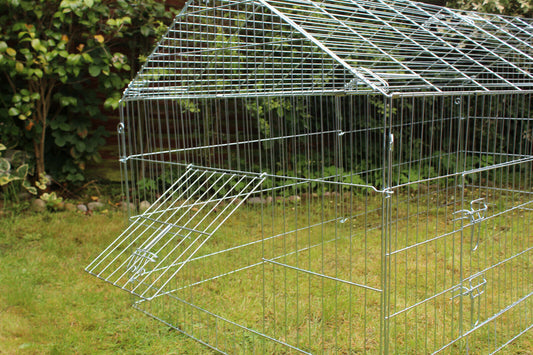While parasites can be a problem for pets at any time of the year, during March and April we see an increase in the numbers of fleas and ticks in the UK. It’s time to make sure your dog is adequately protected by giving them a spring clean with preventative parasite control.
Fleas
Dogs can pick up fleas from interacting with other dogs and animals, as well as picking them up from the environment. Owners can also unwittingly bring them home on their clothes if they have been in flea-infested surroundings.
These little insects are incredible jumpers. They like to make themselves at home on a host animal’s body and feed on its blood through biting. Flea bites can cause skin irritation and result in constant scratching if not treated, which can make a dog very miserable. There is also a chance that a flea could transmit disease through its bite and this has the potential to make a dog very ill, especially if they are allergic.
Fleas are tricky little critters to get rid of, partly due to the rate at which they reproduce. A female flea can lay as many as 40 eggs every day and it is believed that a dog could support up to 300 fleas at any one time.
Fleas will hop on and off a host animal and it is thought that 95% of the fleas in an infestation will be in your home, not on your dog. This makes getting rid of them even more problematic as it means that as well as your dog being treated, your home and any other pets you have will need to be treated too. If not, you will never be able to break the lifecycle and fleas will keep coming back.
Ticks
Unlike fleas, spider-like ticks don’t jump but instead lie in wait (usually in long grass) for a host animal to pass by before dropping or climbing on to them for a blood meal. Ticks bite and bury their heads under the skin of a dog to feed and can be attached for as long as a few days before dropping off. Ticks start off at about 1mm in length but gradually increase in size as they fill with blood and can become as big as a baked bean by the time they have completed their meal.
Ticks are dangerous to dogs because they can transmit nasty diseases such as Lyme disease and, less commonly, Ehrlichiosis and Babesiosis. In dogs, the most obvious sign of Lyme disease is a distinctive ‘bullseye’ lesion around the bite site in addition to lameness and fever.
Research has shown that tick numbers in the UK are increasing rapidly. This is thought to be due to climate change and increased movement of people and pets between countries.
Prevention
Routine preventative treatments for fleas and ticks ensure a dog is protected from picking up any unwanted nasties. There are lots of different options available and the best approach will consider your individual dog, their lifestyle and their environment. You should speak to your vet if you are unsure what would be best for your dog.
- Vacuuming and washing bedding – Frequent vacuuming and the regular washing of bedding and soft furnishings at a high temperature will help to reduce the number of fleas in your home, but it is not enough on its own to eliminate them completely. Your dog and any other pets in the home need to be treated too.
- Spot-on treatments – These preparations come in small pipettes which need to be squeezed on to an area of skin at the back of a dog’s neck where they cannot reach to lick it. The liquid is absorbed into the skin where it is distributed around the body and kills fleas and ticks either on contact or when they bite. Vets recommend that spot-ons are given monthly.
- Tablets – Parasite control can be delivered by a pill, which some owners find easier to administer. Dogs are usually very happy to take a chewable tablet as they are designed to be palatable.
- Flea and tick collars – These are impregnated with insecticides that are slowly and continuously released on to a dog’s skin over several months to repel fleas and ticks. The collars need to be applied tightly enough to have skin contact to work but can cause irritation in some sensitive dogs.
- Coat spray – These products are sprayed directly on to a dog’s coat to kill any parasites that are present and can prevent them from returning for three to four days.
Make sure to be a responsible dog owner and keep up to date on treatments!
Shop our Tick & Flea Treatment range
If you enjoyed this post, you may be interested in:









